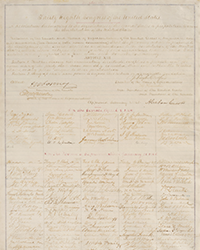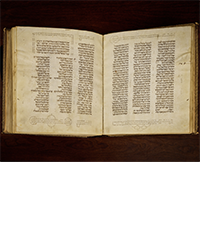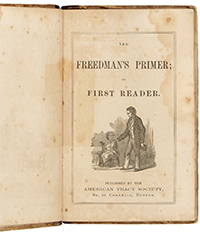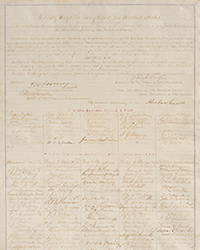Yesterday's Muse Books has issued a new catalogue, The American Civil War. 101 Items, Mainly from the Confederate Perspective. If it's going to be from a Confederate perspective, perhaps they should change the title to “The War of Northern Aggression.” Offered is a selection of 101 works, a few pertaining to the Union cause but not many. While many are contemporary accounts, most books were published in the last 50 years. Some are later historic accounts, but there are many compilations of letters and diaries from those who served during the war, published many years later, or reprinted from earlier editions. These books throw light on an extraordinarily difficult time, sorrows compounded by most of these representing those who fought for a lost cause. Here are a few samples.
Item 37 is Yours Till Death: Civil War Letters of John W. Cotton. The author is obvious, but the book was edited by Lucille Griffith and published by the University of Alabama Press in 1951. Cotton was a middle class farmer from Coosa County, Alabama. He was not dirt poor, but not a plantation owner either. His personal interests in the cause were limited as he was not a slaveholder, but he was one of many who put his life on the line to support southern independence. He would fight on until the end, even as desertions among Confederate soldiers ran high once it became clear that the cause was hopeless. It was a matter of honor for Cotton. In his letters, we learn about his three years of service, fighting in Kentucky and Tennessee, and later Georgia and South Carolina against Sherman as the war turned against his side. We also learn about southern farm life during this difficult time, as Cotton provides his wife with advice on running the farm. Cotton survived three years of war, only to die from measles the following year. This copy comes with a signed letter from the editor. $175.
Item 13 is Carolina Cavalier: The Life and Mind of James Johnston Pettigrew, by Clyde N. Wilson, published in 1990. Pettigrew was a most accomplished man in the days before the Civil War. He entered the University of North Carolina at the age of 15. He would go on to be a scholar, mathematician, author, lawyer, and legislator. He traveled several years in Europe, learning French, Spanish, German and Italian, along with the classical languages of Hebrew, Greek and Arabic. However, when the war broke out, he immediately enlisted, starting out as a private, but quickly moving up the chain of command, eventually appointed a Brigadier General. He almost died during the Peninsular Campaign, being captured and taken prisoner, but was later part of a prisoner exchange and returned to duty. He would lead one of the strongest brigades at Gettysburg, but they suffered enormous losses on the first day of fighting, though successful in advancing. On the third day, he was placed in charge of the division to the left of General Pickett on Pickett's Charge, an ill-advised attempt to gain ground that signaled the end of the Confederacy's attempt to capture territory in the North. Pettigrew was again injured, but led his forces in the necessary retreat. However, less than two weeks later, as they attempted to cross the Potomac back into the South, he was struck by fire once more, dying three days later. $40.
For a more detailed look at the Battle of Gettysburg, or at least the first two days before it all fell apart for the South, we have Gettysburg: The First Day (item 27. 2001. $30) and Gettysburg: The Second Day (item 28. 1987. $25). Both were written by Henry W. Pfanz. These are detailed accounts of what happened on July 1 and 2, 1863. The Confederates pushed forward with notable success on day one, while day two was essentially a stalemate, as the important Union lines held. The events of these two days would set up Lee's decision to make a large attack at the center of the Union line, the aforementioned Pickett's Charge, which signaled the turning point in the war.
Confederate General A.P. Hill's name is not as well known as that of many of his contemporaries, though his role was as important as most generals not named Lee or Jackson. He at times battled with other officers, particularly Longstreet and even Jackson, under whom he served until the latter's untimely death. That death led to his being placed in charge of more troops at Gettysburg. While no one in high command for the Confederacy escaped that battle without criticism, perhaps he received the least. He had performed well in numerous engagements prior to Gettysburg but was not as successful as his responsibilities rose. Then again, no one from the Confederacy had as much success after Gettysburg. Hill suffered from ill health, and much of the time from Gettysburg forward was incapacitated. He was killed fighting at Petersburg just a week before Lee surrendered. Item 16 is A.P. Hill: Lee's Forgotten General, by William Woods Hassler, published in 1957. $50. Item 18 is General A.P. Hill: The Story of a Confederate Warrior, by James I. Robertson, published in 1987. $15.
Item 99 covers a period longer than the Civil War, but such is necessary to understand why it came about. It is Ordeal of the Union, The Emergence of Lincoln, and The War for the Union, three sets in eight volumes by Allan Nevins, a 1971 reprint. It covers the years 1847-1865. It begins with the period of Manifest Destiny. Ironically, all of that expansion almost resulted in the U.S. being divided in half a little over a decade later. The expansion led to new territories, potential new states, but the question whether they would be free or slave divided the country irretrievably. $275.
Yesterday's Muse Books may be reached at 585-265-9295 or yesterdays.muse@gmail.com. Their website is found at www.websterbookstore.com.









